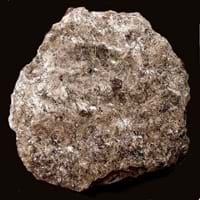Obsidian and Schist
Definition
Definition
Obsidian is a naturally occurring volcanic glass formed as an extrusive igneous rock. It is produced when felsic lava extruded from a volcano cools rapidly with minimum crystal growth
Schist is a medium grade metamorphic rock with medium to large, flat, sheet like grains in a preferred orientation
History
Origin
Ethiopia
Unknown
Discoverer
Obsius
Unknown
Etymology
From Latin obsidianus, misprint of Obsianus (lapis) (stone) of Obsius
From French schiste, Greek skhistos i.e. split
Class
Igneous Rocks
Metamorphic Rocks
Sub-Class
Durable Rock, Medium Hardness Rock
Durable Rock, Medium Hardness Rock
Family
Group
Volcanic
Not Applicable
Other Categories
Opaque Rock
Coarse Grained Rock, Fine Grained Rock, Medium Grained Rock, Opaque Rock
Texture
Texture
Glassy
Foliated, Platy
Color
Black, Blue, Brown, Green, Orange, Red, Tan, Yellow
Black, Blue, Brown, Dark Brown, Green, Grey, Silver
Maintenance
Less
Less
Durability
Durable
Durable
Water Resistant
Yes
Yes
Scratch Resistant
Yes
No
Stain Resistant
No
No
Wind Resistant
No
No
Acid Resistant
No
No
Appearance
Shiny
Layered and Shiny
Uses
Architecture
Interior Uses
Decorative Aggregates, Interior Decoration
Decorative Aggregates, Floor Tiles, Interior Decoration
Exterior Uses
Garden Decoration
Garden Decoration, Paving Stone
Other Architectural Uses
Not Yet Used
Not Yet Used
Industry
Construction Industry
Arrowheads, Cutting Tool, Knives, Scrapers, Spear Points
As Dimension Stone, Building houses or walls, Cement Manufacture, for Road Aggregate, Roadstone
Medical Industry
Surgery
Not Yet Used
Antiquity Uses
Artifacts, Jewellery
Artifacts
Other Uses
Commercial Uses
Creating Artwork, Mirror, Used in aquariums
Used in aquariums, Writing Slates
Types
Types
Fireworks Obsidian, Mahogany, Sheen Obsidian, Snowflake obsidian and Velvet Peacock Obsidian
Mica Schists, Calc-Silicate Schists, Graphite Schists, Blueschists, Whiteschists, Greenschists, Hornblende Schist, Talc Schist, Chlorite Schist, Garnet Schist, Glaucophane schist.
Features
Blocks negativity, Helps to protect against depression
Easily splits into thin plates, Smooth to touch
Archaeological Significance
Monuments
Not Yet Used
Not Yet Used
Famous Monuments
Not Applicable
Not Applicable
Sculpture
Not Yet Used
Not Yet Used
Famous Sculptures
Not Applicable
Not Applicable
Pictographs
Used
Used
Petroglyphs
Used
Used
Figurines
Not Yet Used
Not Yet Used
Fossils
Absent
Absent
Formation
Formation
When the lava is released from volcano, it undergoes a very rapid cooling which freezes the mechanisms of crystallization. The result is a volcanic glass with a uniform smooth texture.
Schist formed by dynamic metamorphism at high temperatures and pressures that aligns the grains of mica, hornblende and other elongated minerals into thin layers.
Composition
Mineral Content
Not Available
Alusite, Amphibole, Biotite, Chlorite, Epidote, Feldspar, Garnet, Graphite, Hornblade, Kyanite, Micas, Muscovite or Illite, Porphyroblasts, Quartz, Sillimanite, Staurolite, Talc
Compound Content
Aluminium Oxide, CaO, Iron(III) Oxide, FeO, Potassium Oxide, MgO, MnO, Sodium Oxide, Phosphorus Pentoxide, Silicon Dioxide, Titanium Dioxide
CaO, Carbon Dioxide, MgO
Transformation
Metamorphism
Yes
No
Types of Metamorphism
Burial Metamorphism, Cataclastic Metamorphism, Contact Metamorphism
Not Applicable
Weathering
Yes
Yes
Types of Weathering
Biological Weathering, Chemical Weathering, Mechanical Weathering
Biological Weathering, Chemical Weathering, Mechanical Weathering
Erosion
Yes
Yes
Types of Erosion
Chemical Erosion, Coastal Erosion, Glacier Erosion
Chemical Erosion, Coastal Erosion, Glacier Erosion
Properties
Physical Properties
Hardness
5-5.5
3.5-4
Grain Size
Not Applicable
Medium to Fine Coarse Grained
Fracture
Conchoidal
Conchoidal
Streak
White
White
Porosity
Very Less Porous
Highly Porous
Luster
Vitreous
Shiny
Compressive Strength
0.15 N/mm2
33
Not Available
Cleavage
Non-Existent
Slaty
Toughness
Not Available
1.5
Specific Gravity
2.6-2.7
2.5-2.9
Transparency
Translucent
Opaque
Density
2.6 g/cm3
2.8-2.9 g/cm3
Thermal Properties
Specific Heat Capacity
0.92 kJ/Kg K
10
Not Available
Resistance
Heat Resistant, Impact Resistant
Impact Resistant, Pressure Resistant, Water Resistant
Reserves
Deposits in Eastern Continents
Asia
Afghanistan, Indonesia, Japan, Russia
Afghanistan, Bangladesh, Bhutan, China, India, Japan, Kazakhstan, Malaysia, Pakistan, Russia, Thailand, Turkey, Vietnam
Africa
Kenya
Egypt, Ethiopia, Morocco, Nigeria, South Africa
Europe
Greece, Hungary, Iceland, Italy, Turkey
Austria, England, France, Georgia, Germany, Italy, Liechtenstein, Monaco, Norway, Slovenia, Spain, Sweden, Switzerland
Others
Not Yet Found
Not Yet Found
Deposits in Western Continents
North America
Canada, Mexico, USA
Canada, Costa Rica, Cuba, Mexico, Panama, USA
South America
Argentina, Chile, Ecuador, Peru
Brazil, Colombia, Guyana
Deposits in Oceania Continent
Australia
New Zealand
New South Wales, New Zealand, Queensland
All about Obsidian and Schist Properties
Know all about Obsidian and Schist properties here. All properties of rocks are important as they define the type of rock and its application. Obsidian belongs to Igneous Rocks while Schist belongs to Metamorphic Rocks.Texture of Obsidian is Glassy whereas that of Schist is Foliated, Platy. Obsidian appears Shiny and Schist appears Layered and Shiny. The luster of Obsidian is vitreous while that of Schist is shiny. Obsidian is available in black, blue, brown, green, orange, red, tan, yellow colors whereas Schist is available in black, blue, brown, dark brown, green, grey, silver colors. The commercial uses of Obsidian are creating artwork, mirror, used in aquariums and that of Schist are used in aquariums, writing slates.
|
||
|
||
|










